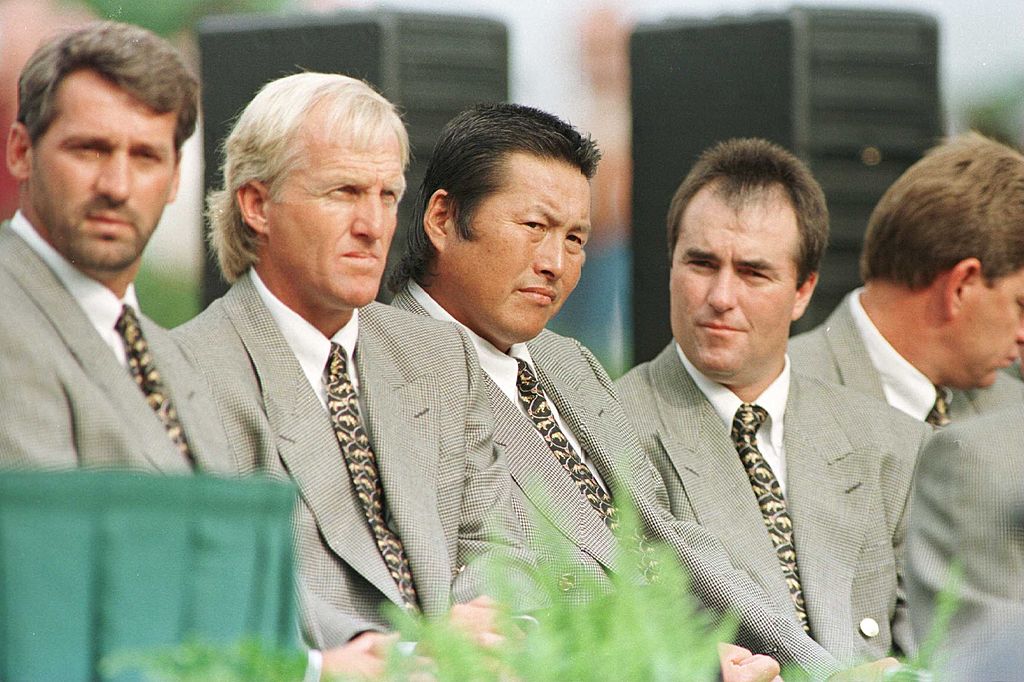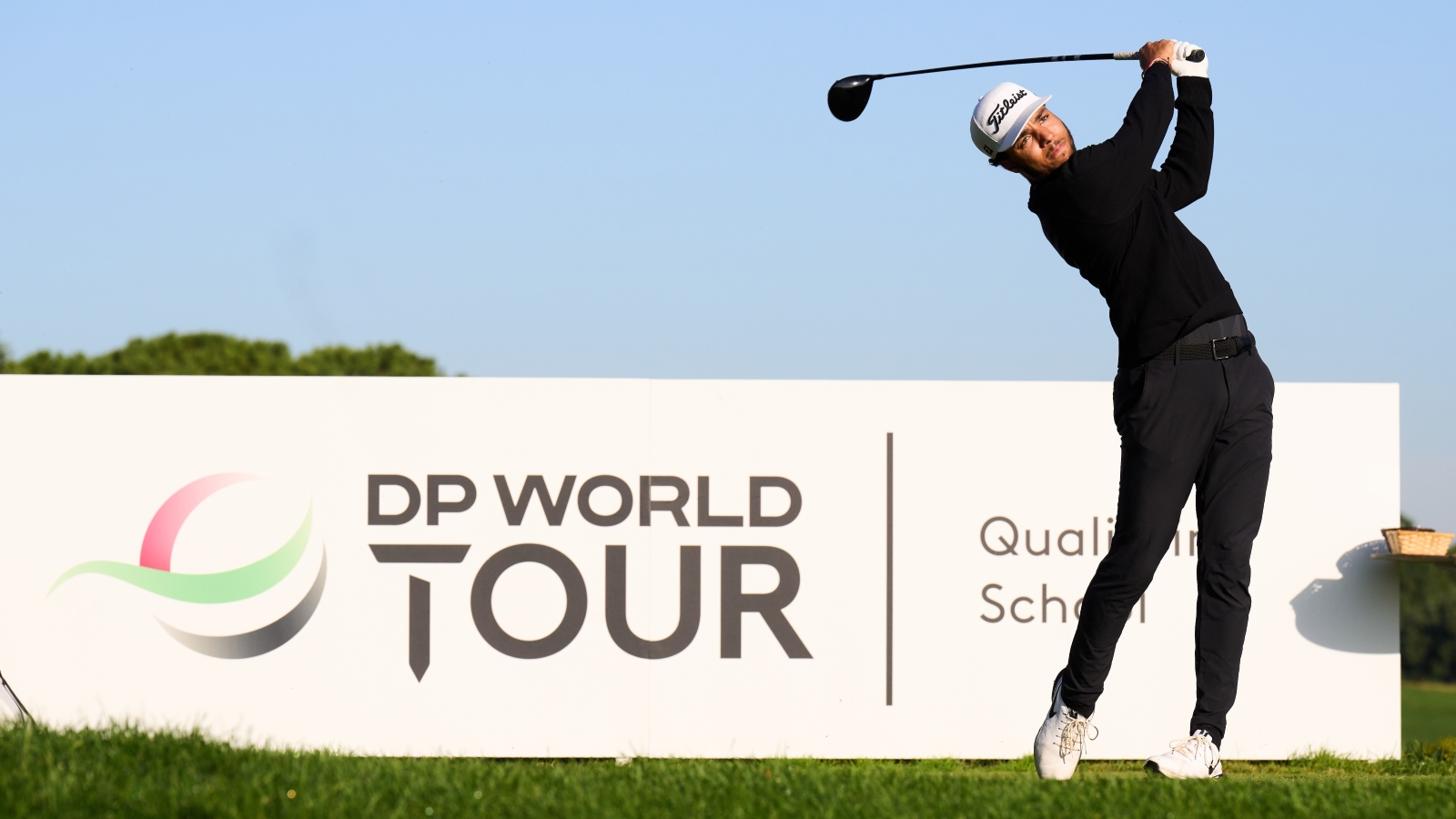According to veteran commentator Peter Kostis, the Presidents Cup was the brainchild of Big TV, or at least of the legendary television producer Frank Chirkinian, who in consultation with PGA Tour Commissioner Deane Beman, came up with the idea to showcase players from outside Europe and the United States.
At the time, there were some really good ones. Nick Price of Zimbabwe and Greg Norman of Australia were jockeying for the world number-one spot. Price’s fellow Africans, David Frost, Mark McNulty and Ernie Els, were on the up. So was Vijay Singh. So was Frank Nobilo. Steve Elkington would soon win the PGA Championship. Jumbo Ozaki was the biggest thing out of Japan since Yoko Ono.
The idea was later fleshed out by Beman and his chief operating officer, and subsequent successor, Tim Finchem, early in 1994, who “sat down and kicked around the general idea and notion of it,” Finchem told the PGA Tour’s website. “We determined that we would give it a shot. We didn’t sort of run around and take a poll.”
What he didn’t say is this: they were in a bit of a hurry.
While the Cup was originally slated for 1996, in Alan Schupak’s book, Deane Beman: Golf’s Driving Force, it is written that Beman and Finchem rushed the concept into existence to ward off the threat posed by International Management Group (IMG), which had conceived something called The Hemisphere Cup, which would pit the winning Ryder Cup team against a team representing the best southern hemisphere players – Norman, Price, Jumbo, et al.
Four months after Finchem and Beman decided to pull the trigger on the Presidents Cup – the format of which bore striking resemblance to that of the zombie Hemisphere Cup – honorary starter Byron Nelson set the U.S and International teams free at the Robert Trent Jones Golf Club in Virginia.
David Graham was a popular captain of the Presidents Cup Internationals in 1994. Within two years, he was gone. PHOTO: Getty Images.
The course was chosen because they were calling it the Presidents Cup and they had to bestow sufficient gravitas upon the event. And because Virginia is next to Washington, D.C where the Presidents live, that golf course it was.
They never did get the incumbent President, Bill Clinton, along – he was busy signing a bill that would condemn drug king-pins to death – but he did host the teams for a black-tie dinner at the White House, and went jogging with Finchem, by then the new boss.
Instead of Clinton, Gerald Ford, a mate of U.S captain Hale Irwin’s, was invited to be honorary chairman. And regardless of what an honorary chairman does – one might posit nothing very useful – Ford was, and remains, the 38th President of the United States. So he had that going for him.
While the first event lacked a little star power – Norman was ill with the flu, Els had committed to the British Masters, and Jumbo had something else on – it didn’t lack for controversy when The Shark suddenly got better and turned up anyway.
Rather than be chuffed that his fellow Australian and two-time major champion would grace the event and support the team, Internationals captain David Graham said to Norman, according to USA Today, “What the hell are you doing here?”

David Graham (left), Greg Norman (centre) and Mark McNulty of Zimbabwe at the 1994 Presidents Cup. PHOTO: Getty Images
Norman replied that he was there to support the team and that he would like to wear a microphone following a request from CBS producer Chirkinian.
Graham was not having that.
“Not if I have anything to do with it,” he said. “You’re not going to take anything away from these players who did all the dinners, all the practice rounds, all the meetings. You want to come riding in here and go on national television and tell everybody how great you are? That is not going to happen.”
According to several sources of respected golf writer Jaime Diaz, Graham’s exact words to Norman included the statement, “This isn’t going to be the f***ing Greg Norman show.”
Graham later backed it up publicly: “The Presidents Cup is not Greg Norman’s golf tournament. It is a 12-man team. It is not Greg’s team,” Graham said.
Norman seethed, as Norman would, and ate his revenge cold. Ahead of the 1996 Open Championship at Royal Lytham and St Annes, he called a meeting of the players in a function room of the Grand Hotel, a luxury seaside spa, to discuss the Presidents Cup, which would be contested at that same Robert Trent Jones course in Virginia.
Norman told press: “I’ve talked to all the players, and none of us know what’s going on; not a clue. I don’t even know when I have to be there or what I have to do. We haven’t heard from our captain. I am very concerned about it, from a team point of view. You have got to get the camaraderie going.”
Graham countered that he had organised a team meeting before The Players at TPC Sawgrass in March, but that only Craig Parry and Nobilo had turned up.

The USA won 20-12 in 1994 but Craig Parry beat Corey Pavin one-up in Sunday singles. PHOTO: Getty Images
It is thus ironic – Parry might have another word for it – that following the Lytham seaside spa meeting (which had voted unanimously, with only Michael Campbell abstaining, to oust Graham as captain) it was Parry who took a post-meeting phone call from Graham.
According to Diaz’s piece in Sports Illustrated, Graham hadn’t known his tenure was on the meeting’s agenda. And the conversation went like this:
“Hello, Craig,” Graham said cheerfully. “How did the meeting go?”
Parry swallowed hard. His first thought was tear off the Band-Aid. Don’t lie. Don’t keep it from him. Just tell him.
Parry took a breath and said: “The players would like a new captain.”
Parry was told by PGA Tour officials that it was meant to be a secret, at least for a while. Parry countered that Graham was a mate, that he’d called him. He wasn’t going to bullshit the man.

By 1996 Peter Thomson (left) and Ian Baker-Finch were captain and vice-captain of the International team – and Greg Norman (back) was good with that. PHOTO: Getty Images
Regardless, Graham was humiliated, threatened legal action. The players came across as privileged, pampered. Finchem looked bad, too. The Tour owns and operates the whole show. How did the commissioner not know his team didn’t like his team’s captain?
Wrote Diaz: “The reputations of all the players who voted to dump Graham – Robert Allenby, Steve Elkington, Ernie Els, David Frost, Mark McNulty, Frank Nobilo, Norman, Parry and Nick Price – were damaged. At worst, they lived down to the stereotype of the selfish and stupid modern pro. At best, they behaved like sheep.”
“We regret the way it happened,” Parry said. “If we could get in that room again and do it over, David would still be captain.”
This piece is an edited extract from Matt Cleary’s feature story in the October issue of Golf Australia magazine.
https://www.golfaustralia.com.au/news/inside-golf-australia-october-2024-611518






